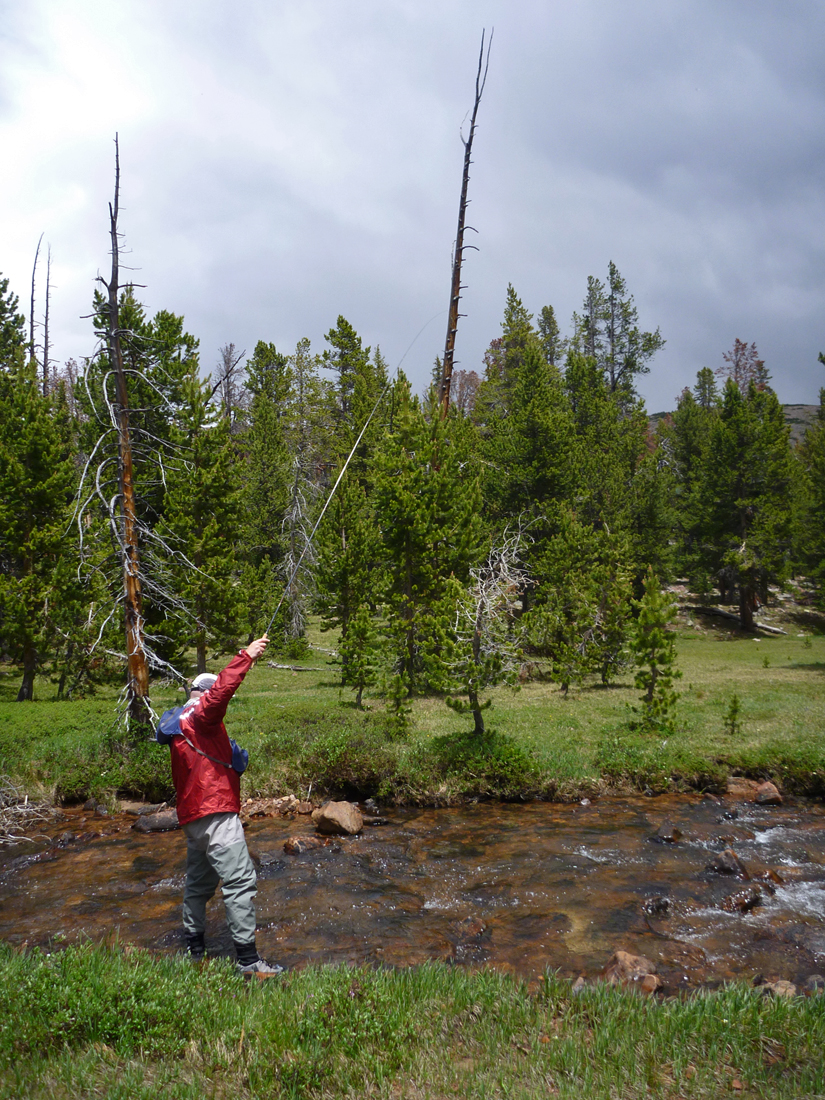|
Tenkara fishing is becoming ever more popular with backcountry fishing
enthusiasts. The obvious reason for this is the light weight gear. My tenkara rod weighs only 3.2 ounces,
including the cloth carry bag. There is no need for a reel. With tenkara technique, you simply attach the fly
line to the rod tip.
The telescoping rods are relatively long, with a typical tenkara rod ranging from 11
to 14 feet in length. In spite of this length, the rod collapses down into a small, compact package,
which is also ideal for backpacking, as it takes up little space. The traditional tenkara fly line is more
like a furled leader than a typical Western fly line, and has very little weight.
I've been
fishing with tenkara gear for a while now, and have come to appreciate both the advantages and limitations of the tenkara
technique.
First the advantages:
It's very light weight. The rod weighs
very little, and there's no need for a reel or a long length of fly line, backing, etc. The rod, along with a cloth
carry bag and tenkara line weigh less than 3 and 1/2 ounces. When you're trying to cut pack weight to a minimum,
this is a very attractive option.
The long length of the rod makes for easy line control options when stream
fishing. A 12 foot rod makes it a lot easier to control the drift of a fly in the current. On smaller streams,
you can often reach all the way across the stream with the long rod, and avoid getting the line caught in a fast current
running down the center.
The lightweight fly line and light carbon fiber rod make for very "soft"
presentations. The tenkara gear and technique allows for very delicate presentations. If you really want to set
a fly down very lightly on the water, tenkara is a great option.
Now, the disadvantages:
Wind creates some real problems for tenkara casting. The absence of weight in the fly line and the delicate
nature of the rod which are such a big benefit when making soft presentations are real liabilities in any sort of wind.
There just isn't enough mass or power in the rod/flyline combination to cast into even a light wind very effectively.
Casting distance is limited. There is no reel, so you're limited to the casting distance of the rod
plus the attached line. On lakes or other big water, this means that you may not be able to get your fly out far enough
to where you want it.
The long length of the rod can be a liability in tight quarters. On a stream
with a lot of overhanging vegetation, trying to maneuver a 12 foot rod can be a real pain.
My conclusion:
I enjoy using my Western rod and reel more than my tenkara rod. The Western system is more versatile, and I find
it to be more effective in almost every situation than tenkara with the possible exception of small streams with minimal vegetation
in no wind.
However, when I'm going on a long backcountry fishing trip, I always take my tenkara
rod with me, either by itself, or in addition to my Western rod and reel. At under 4 ounces, it makes a great
back-up rod. I've used it in this capacity twice; once when my friend's rod tip broke, and once when I forgot
to pack my reel. When you're out on a backcountry fishing trip, and you've hiked a long ways to get to
the good fishing, 4 ounces is a small price to pay for a back-up rod option.
I also use it as
my only rod on backcountry trips or day hikes that are more about hiking and less about fishing. If I'm not
sure whether I will be doing any fishing at all, I leave the Western rod and reel at home, and just take the tenkara.
Again, it's just so light weight, that even if I end up not using it, I don't mind the extra weight.
| Tenkara rod in the High Uintas Wilderness |

|
|
